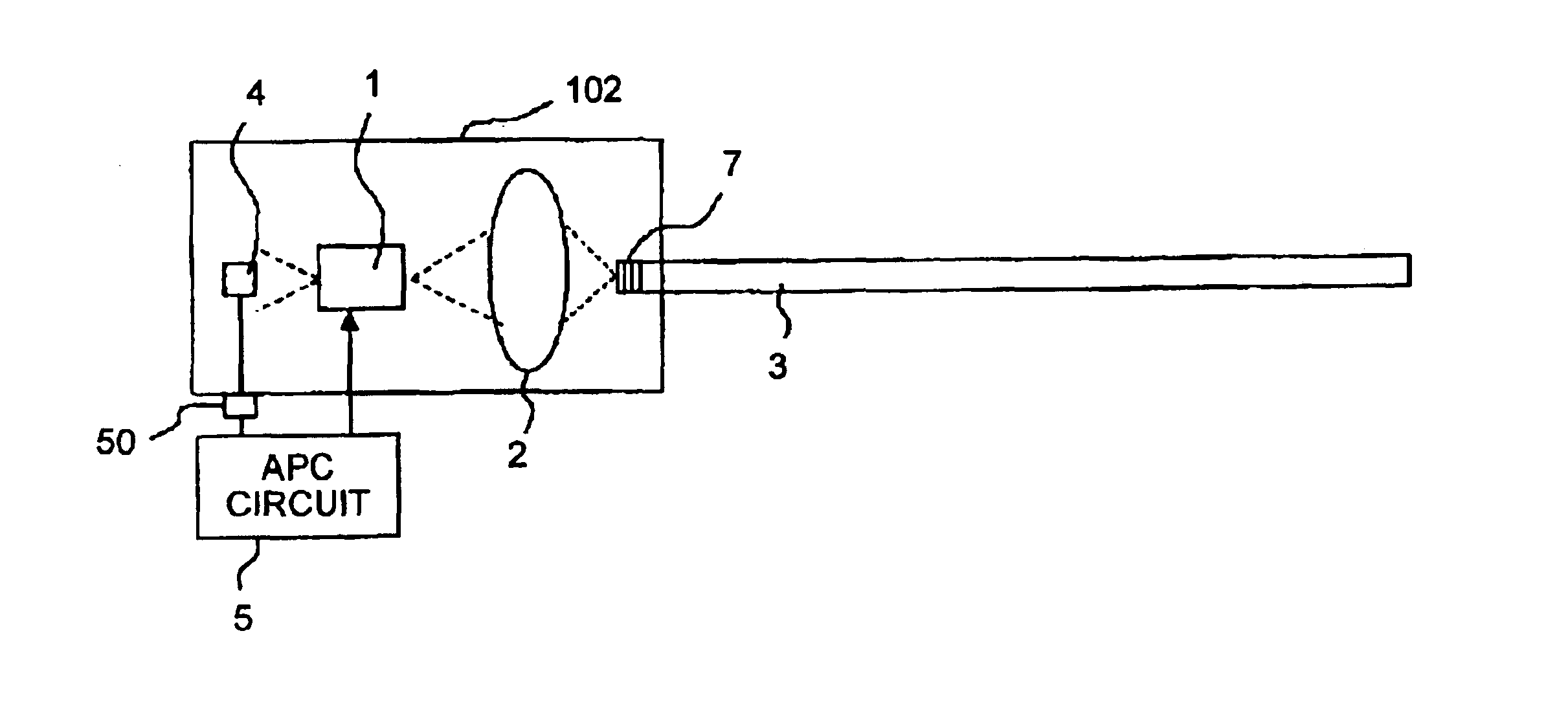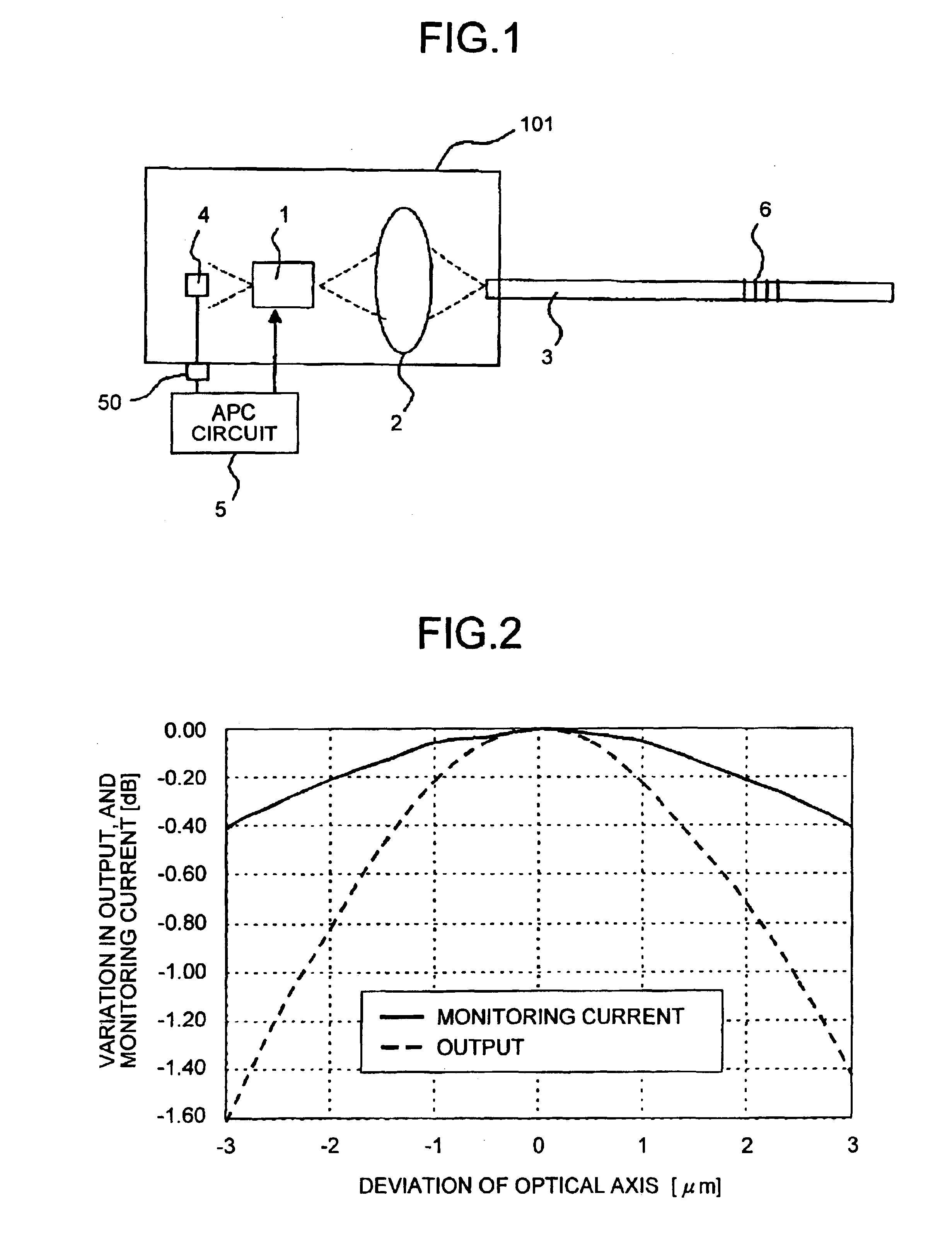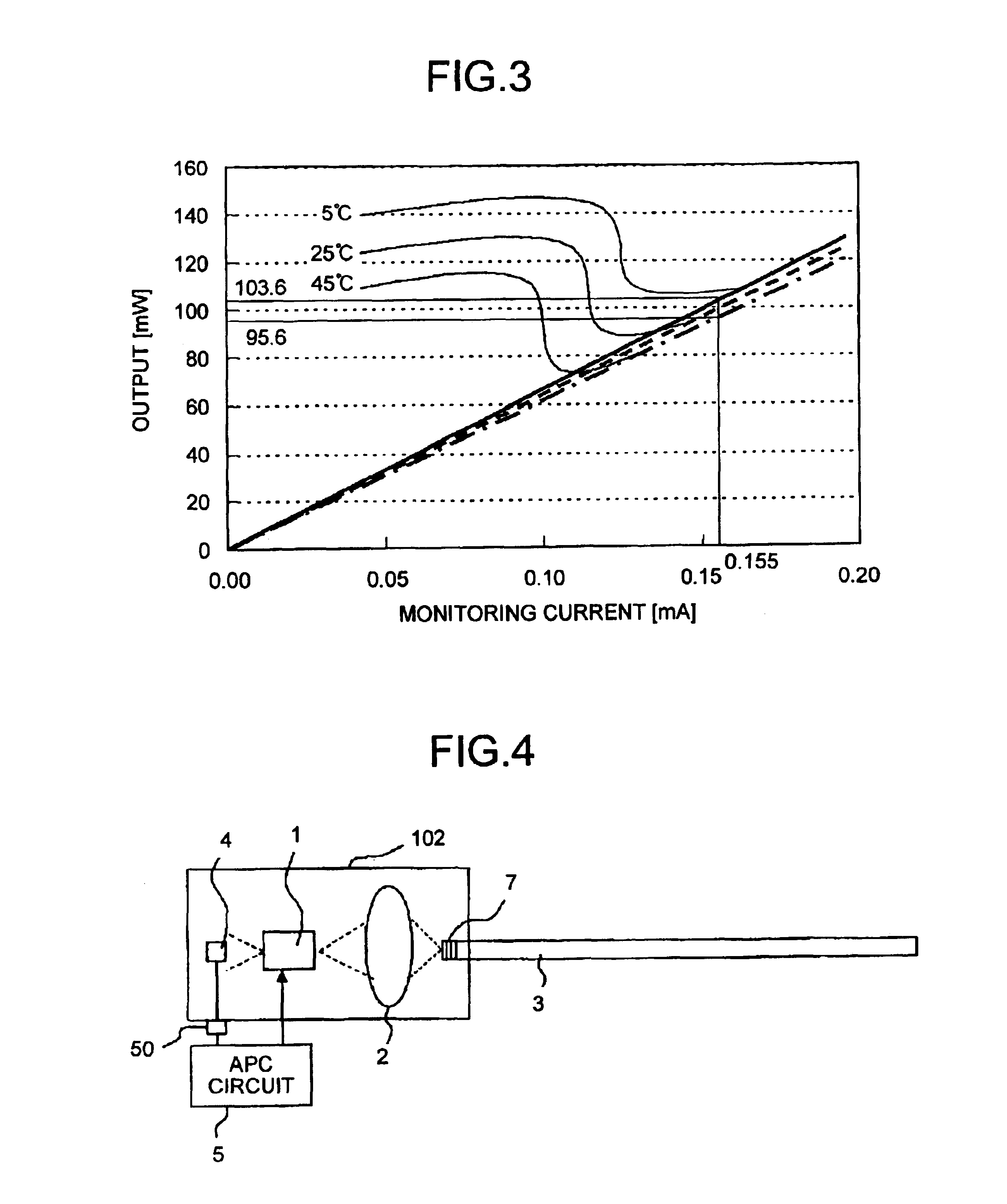Optical module
a technology of optical modules and output beams, applied in the field of optical modules, can solve the problems of reducing the quantity of output beams, axis deviation, and the deviation of optical axes, and achieve the effect of suppressing the tracking error
- Summary
- Abstract
- Description
- Claims
- Application Information
AI Technical Summary
Benefits of technology
Problems solved by technology
Method used
Image
Examples
Embodiment Construction
[0023]FIG. 1 is a diagram that shows a structure of an optical module 101 relating to an embodiment of the present invention. In FIG. 1, reference numerals 1 to 5, and 50 denote constituent parts of the optical module identical to those of the conventional technique. A reference numeral 6 denotes a fiber grating that has a diffraction grating provided in the optical fiber 3 and is used as a feedback section that reflects a part of a beam and passes or absorbs the rest of the beam.
[0024]The operation of the optical module 101 is explained below. The laser diode 1 emits the front laser beam. The lens 2 focuses the first laser beam. The optical fiber 3 transmits the focused beam. The fiber grating 6 reflects a part of the beam incident to the optical fiber, and passes the rest of the beam. The reflected part of the laser beam is passes through the lens 2 and the laser diode 1 and, falls on the photodiode 4. When the fiber-end beam output changes due to a deviation of the optical axis, ...
PUM
 Login to View More
Login to View More Abstract
Description
Claims
Application Information
 Login to View More
Login to View More - R&D
- Intellectual Property
- Life Sciences
- Materials
- Tech Scout
- Unparalleled Data Quality
- Higher Quality Content
- 60% Fewer Hallucinations
Browse by: Latest US Patents, China's latest patents, Technical Efficacy Thesaurus, Application Domain, Technology Topic, Popular Technical Reports.
© 2025 PatSnap. All rights reserved.Legal|Privacy policy|Modern Slavery Act Transparency Statement|Sitemap|About US| Contact US: help@patsnap.com



